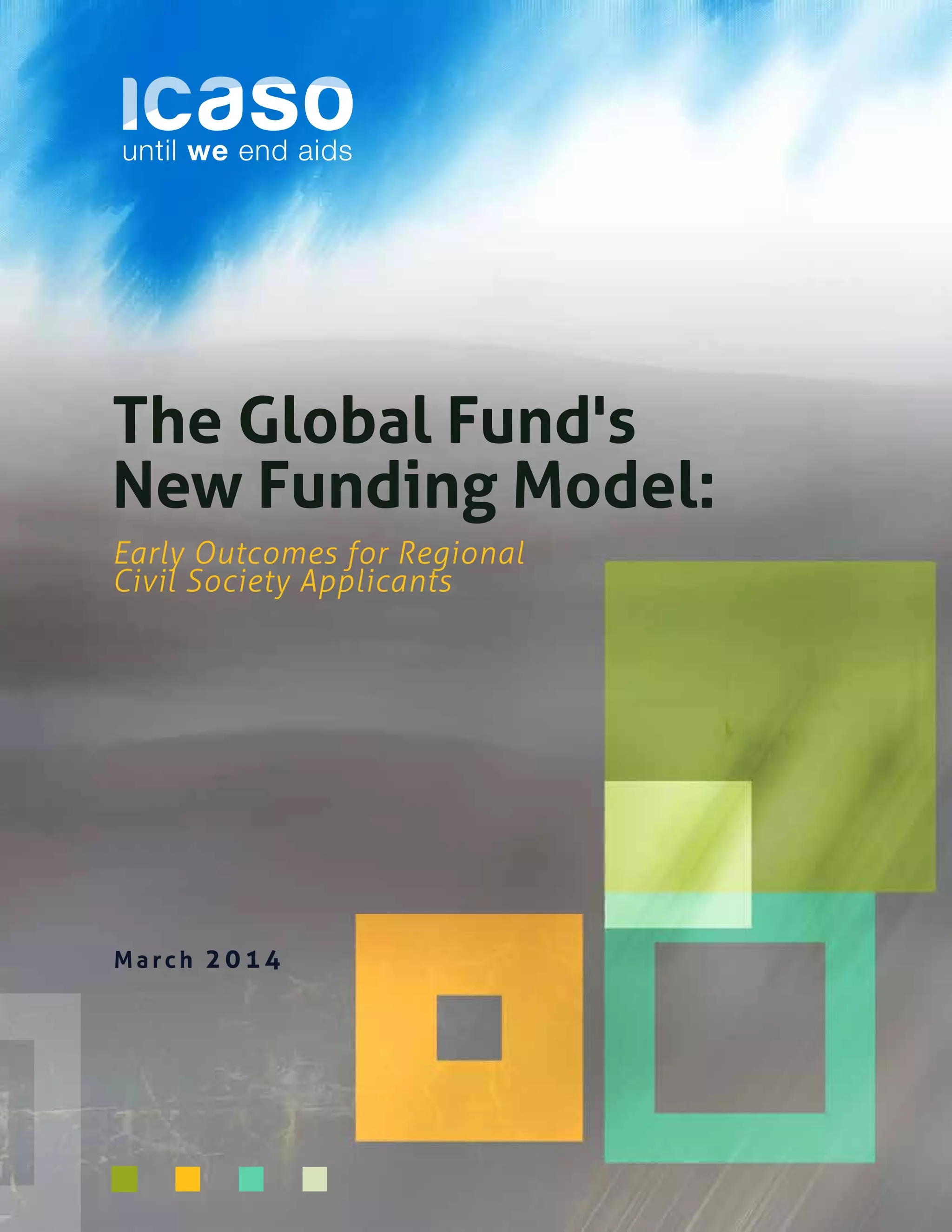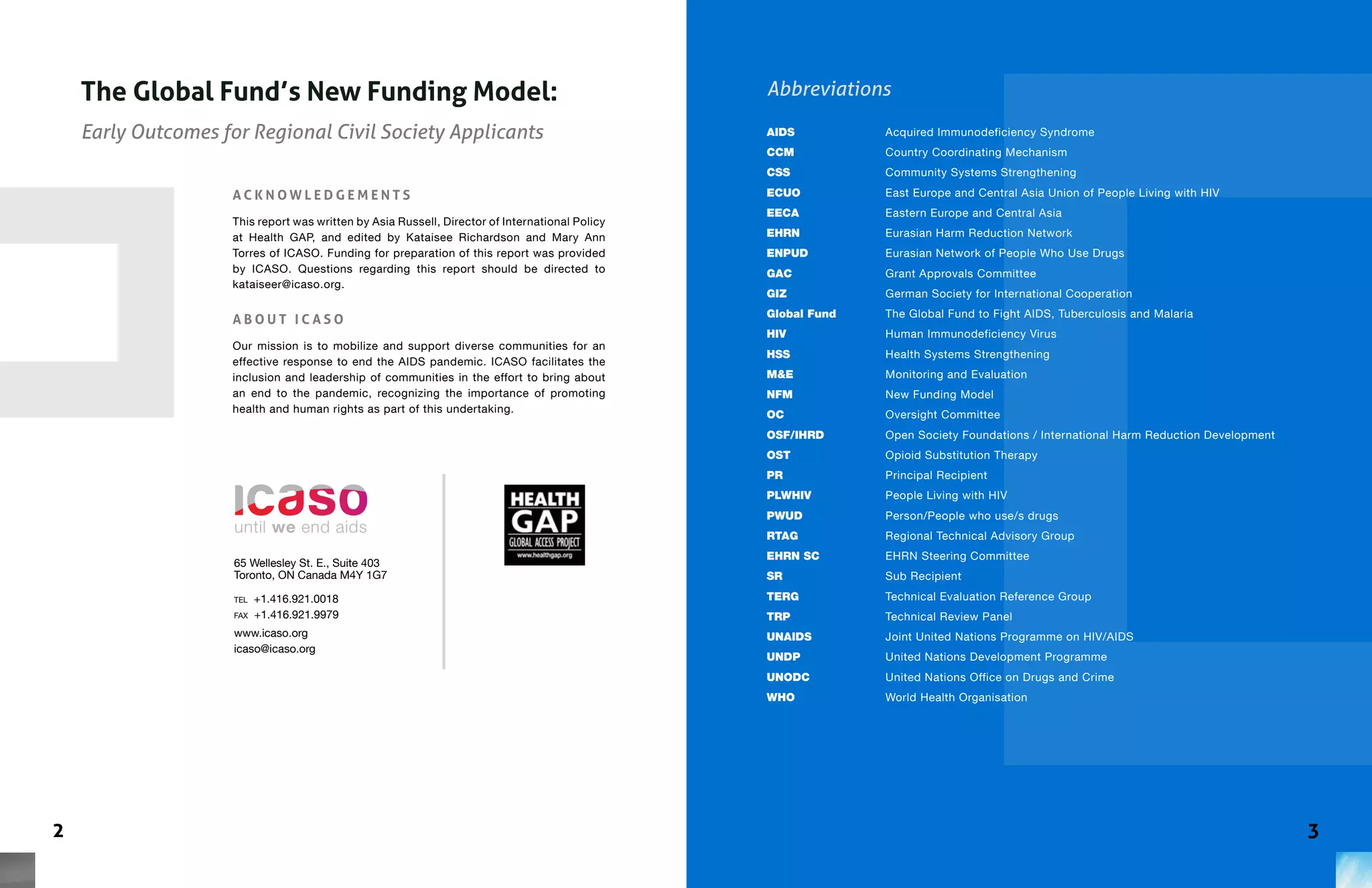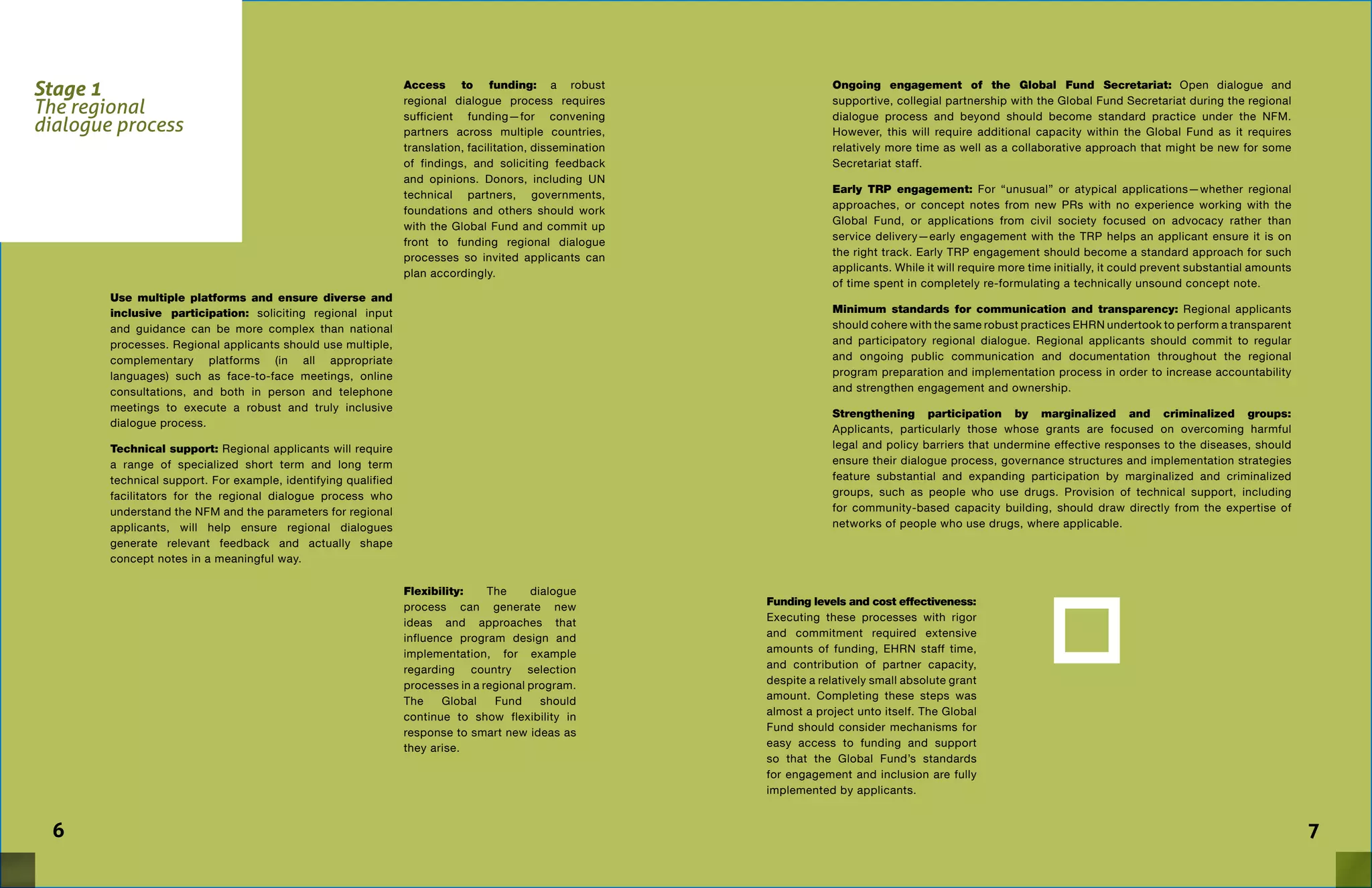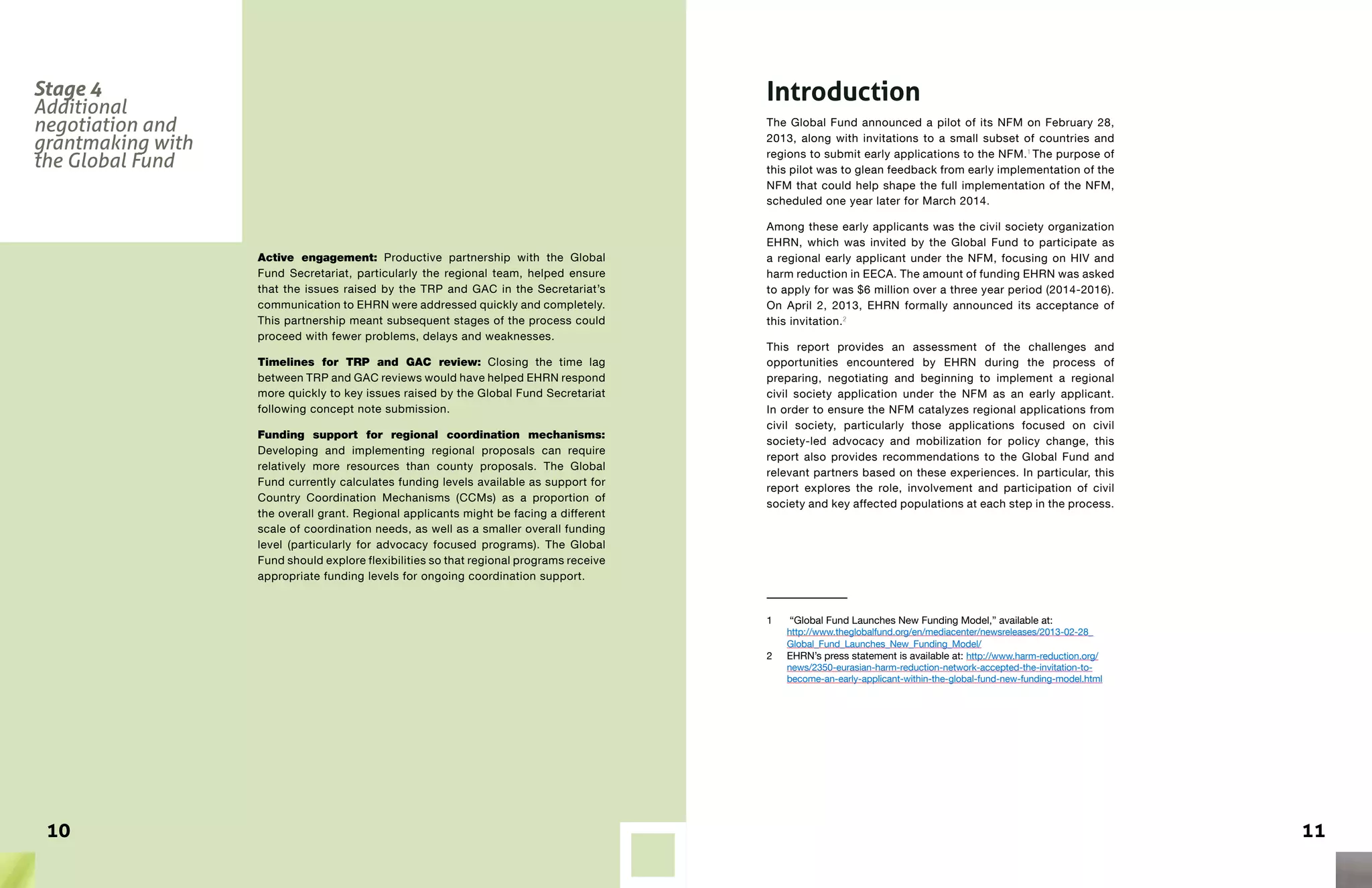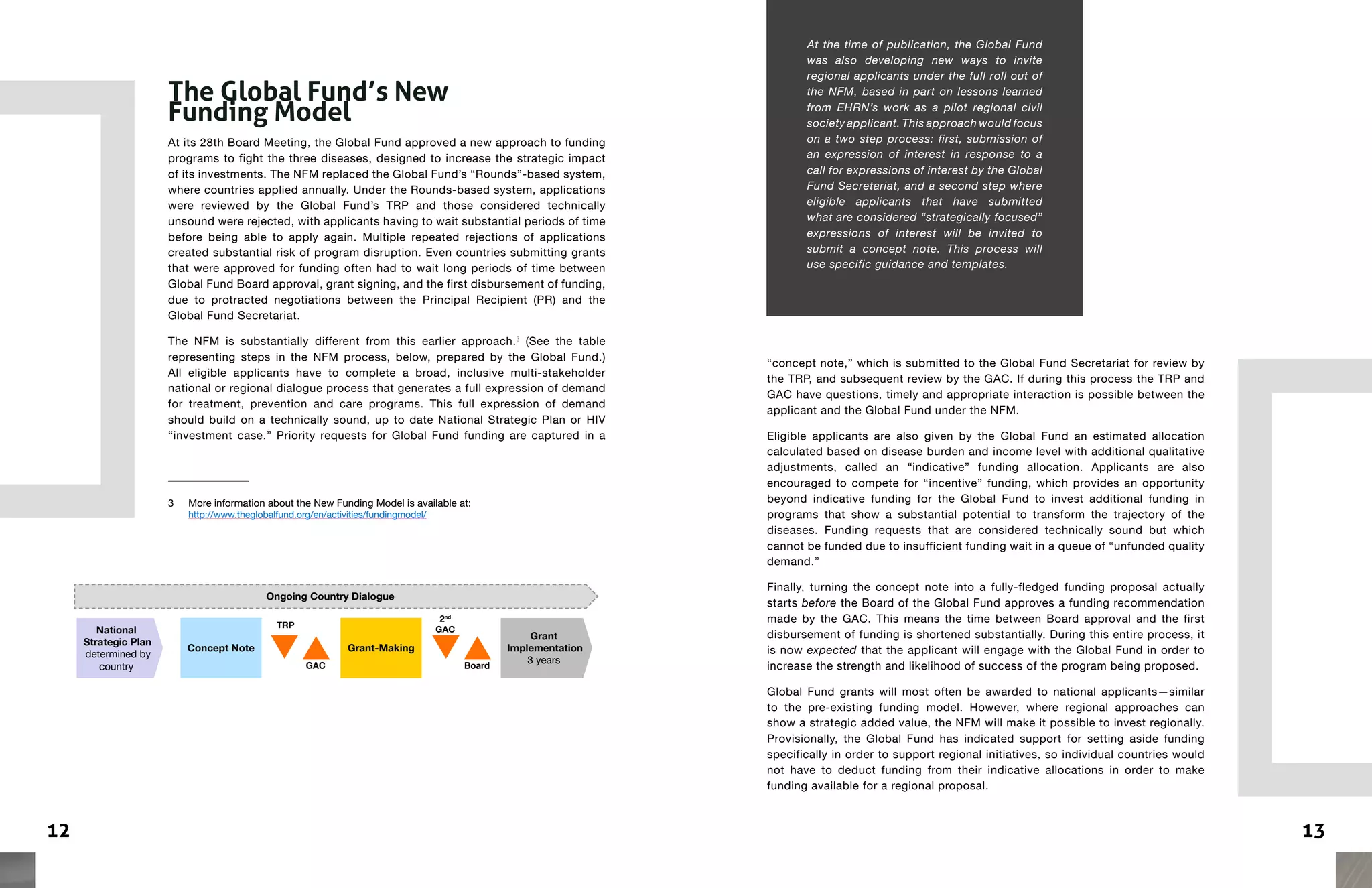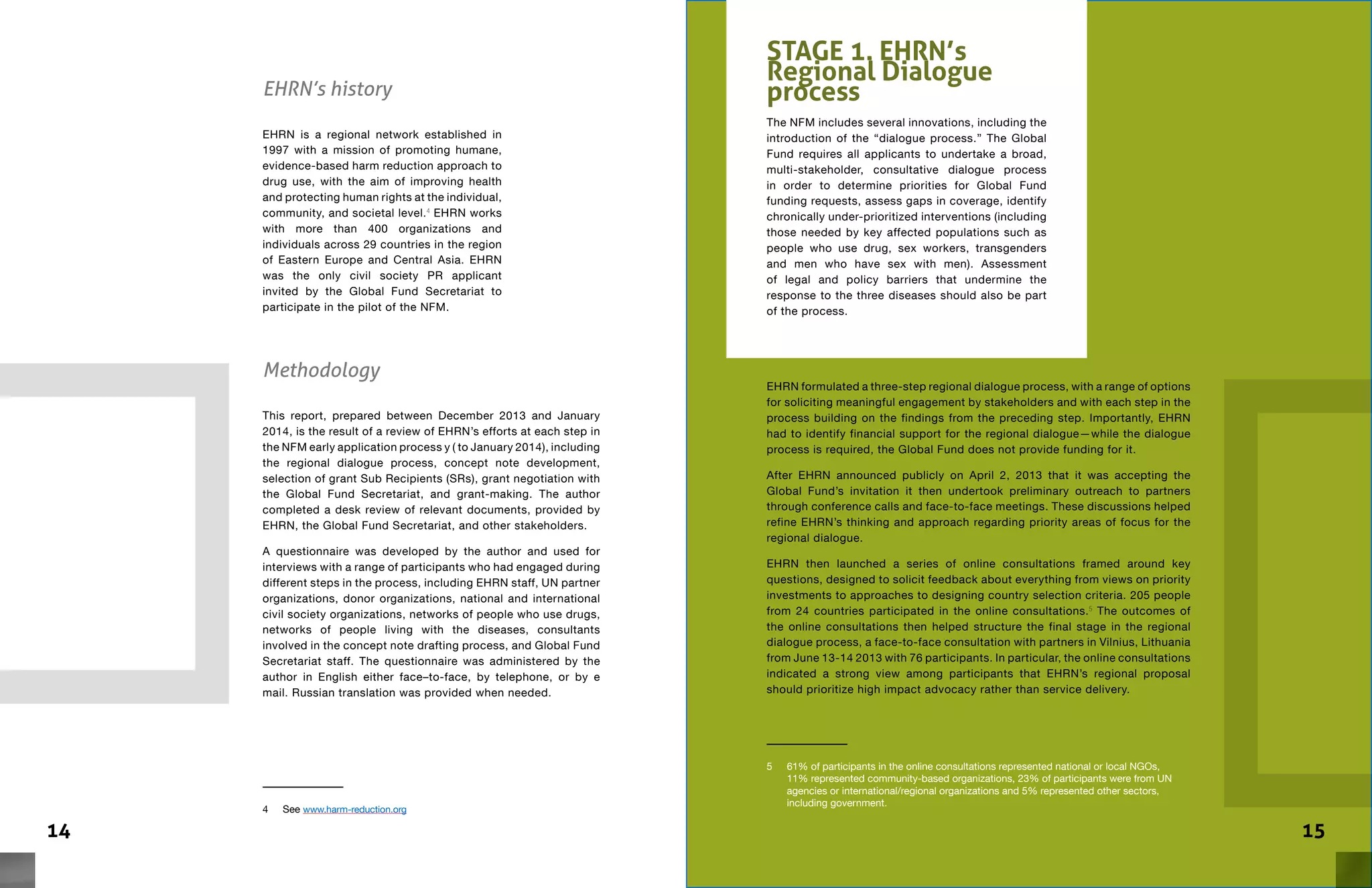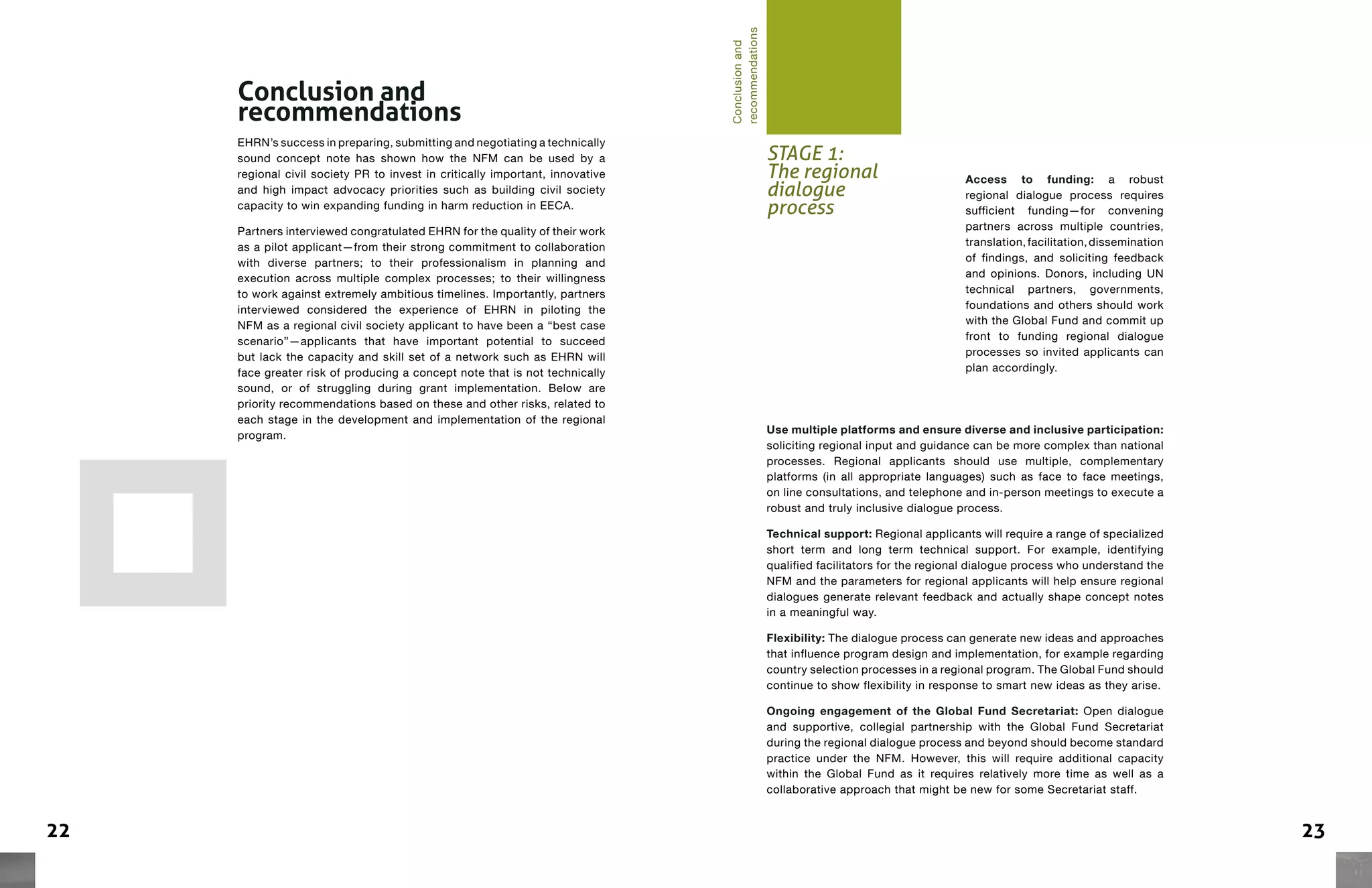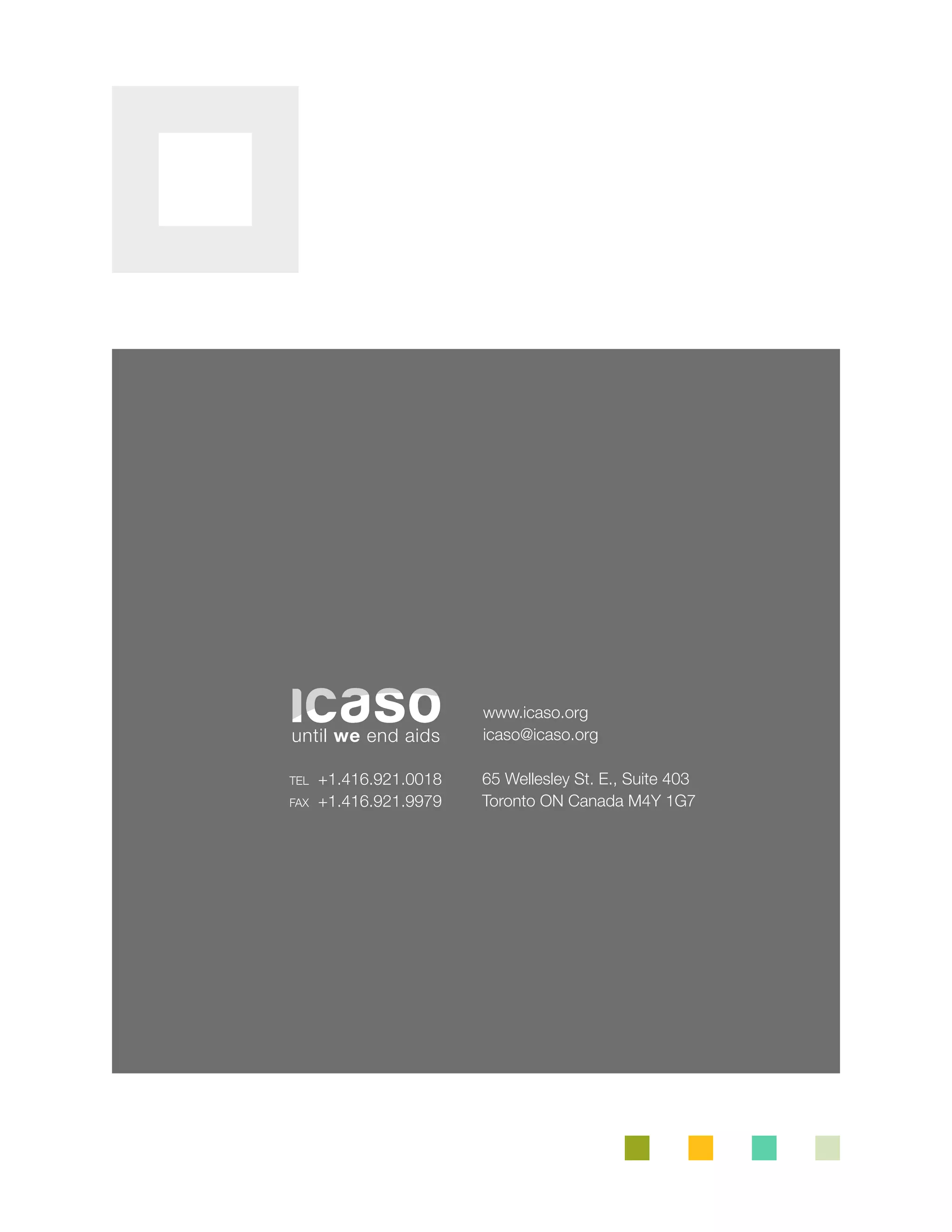The document summarizes Eurasian Harm Reduction Network's (EHRN) experience as the first civil society organization to participate as a regional principal recipient in the Global Fund's New Funding Model pilot program. EHRN developed a regional HIV and harm reduction proposal for Eastern Europe and Central Asia and underwent the multi-step application process between April-January 2014. The document analyzes the challenges and opportunities EHRN faced at each stage of regional dialogue, concept note development, sub-recipient selection, and grant negotiations. It provides recommendations to strengthen civil society participation and regional applications focused on advocacy in the future.
